12 Types of Myrtle to Bring Beauty & Aroma to Your Home
Author: Jen Worst | Editor: Omar Alonso
Review & Research: Jen Worst & Chris Miller
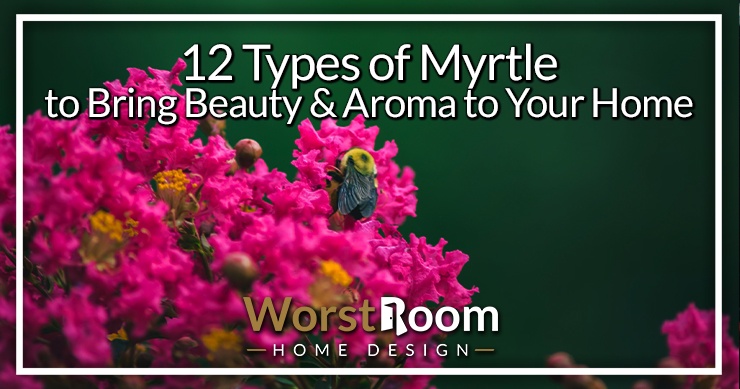
People who are looking for exquisite looking flowering plants with ambrosial scents need look no further than the types of myrtle. This is a plant that got its name from the Greek word 'Myrrh' which is a substance used for creating incense and perfumes.
Myrtles are also known to be used in making many essential oils around the world. Not only are they beneficial in making products, but these plants can also make your yard bloom like never before.
These plants are not suited for small containers and must be exhibited in a spacious environment to make them flourish. This article should help you acquire knowledge about different myrtle types.
Like many other flowers, myrtle has many different varieties amongst them. You better know which one is what, since only then you can perfectly adorn your house.
12 Types of Myrtle
Every time there is a British Royal wedding, myrtle pops back into the public eye, since in 1858 the Queen's eldest daughter Victoria carried myrtle in her special bouquet. She was not the first but this started the tradition which continued with the marriage of Pnice Harry .
Belonging to the Myrtaceae family, these flowers can be located in Asia, South America, North America, and North Africa. Myrtle is a kind of shrub that emits fragrance, and make sure you place them in large types of planters if not in the ground.
A common way to identify myrtle is by observing their star-shaped flowers, glossy green leaves, and purple berries. That being said, there are many other variations, too, and we are here to highlight to you the distinctive characteristics.
Strawberry Myrtle

You might ask why strawberries? Well, it blooms a type of fruit that resembles strawberries. Also known as Ugni Molinae, the strawberry myrtle is a well-known flower in Chile and Argentina and is found in abundance in these two countries.
You will be able to see strawberry myrtles in Australia and New Zealand with different names such as Tazziberry and Ugniberry. It can grow up to 5 feet tall and will require well-drained soil.
These types of myrtle trees work best under direct sun and can withstand heat and drought. An advantage of this plant is that you can use the leaves to make tea, and the flowers are edible too, tasting like wild berries.
True Myrtle
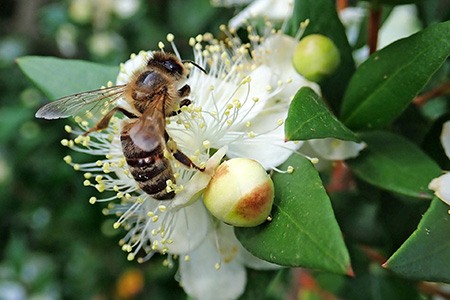
This is also known as European Myrtle because it was mostly found in European regions. Now people moving from place to place have taken this flower to different regions like North America and North Africa.
The specialty of true myrtle is that they can grow 6 feet tall. Their appearance of these myrtle tree types is what attracts most insects, mammals, and birds. Make sure you know how to prune crepe myrtle in general, which will help with all these kinds of myrtle listed here.
These plants come with pointed leaves and star-shaped small flowers. This myrtle is extremely fragrant and can soothe the ambiance well.
True myrtle blooms from late spring to the first stages of summer. They can be cemented in different kinds of soil and won't require anything particular. Just keep the soil well-drained. This plant is drought tolerant and does not require regular watering.
Chilean Myrtle
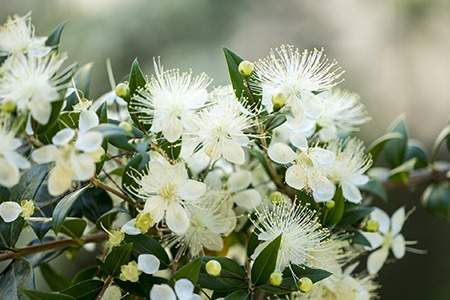
These types of myrtle originated in Chile and Argentina just like the Ugni Molinae (Strawberry Myrtle). Don't get confused, they are not similar. Chilean myrtle is also known by its biological name Myrtus apiculata.
It is one of the tallest myrtles you can get and will be best fitted for yards and big gardens. Chilean myrtle can reach 50 feet in height and has a bush-like structure.
The trunk on it comes in grayish or orangish color, which is uncommon. It blooms with white scented flowers that are very striking.
Their blooming season is from mid-summer to autumn. The fruits they bloom taste similar to blackberries and are famous amongst the natives. This flower must be put under the direct sun to thrive. It cannot be shaded because doing so, it won't last.
Rose Myrtle
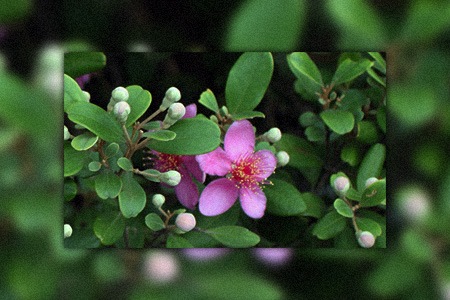
This variety can be located in Asia, countries like China, Malaysia, and India, where the climate is humid. Rose myrtles grow in forest regions where the environment is wet and humid.
They can reach up to 12 feet in height and showboats dark green leaves. The flowers that bloom from this plant grow in clusters and are usually pink. When looking at mature versions of these myrtle tree varieties it would be easy for the uninitiated to confuse it with pink types of dogwood trees.
The appearance is very unique and eye-catching. The fruits these plant bears are used to make pies, jams, etc. You can even eat the fruits raw and they have a very sweet taste.
Asian people love these myrtle varieties because of their edible and fragrant characteristics. If you are looking for a plant that has all the cool benefits, then rose myrtle can be a good choice.
Downy Rose Myrtle
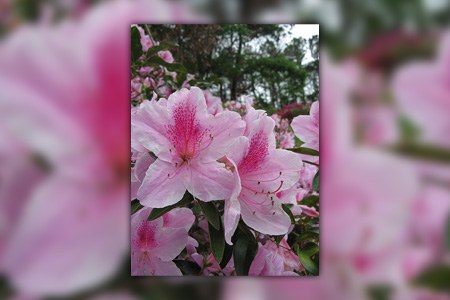
Downy rose myrtle is native to Asia and is known as a landscaping plant. They are really beautiful to look at and have pink tone flowers to top them up.
They tend to live through the hottest weather, thus it can be easily planted under the direct sun without any worries. Just keep the soil drained so that it can thrive in such conditions.
The height of these types of myrtle trees can reach up to 12 feet maximum, but 6 feet is the most common sizing. The flowers they bloom and the fruits they bear comes in as great attraction to birds and mammals. The fruits are edible and sweet, thus it is admired by many in Asia.
Lemon Myrtle
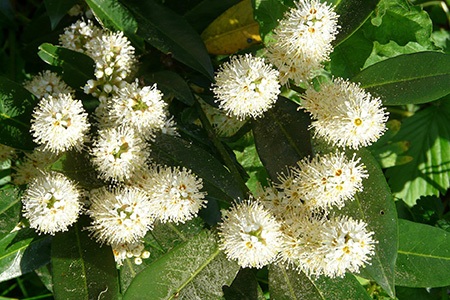
When we talk about fragrance, the lemon myrtle is one of the most aromatic flowers out there. You can already guess the smell of it even if you haven't seen the flowers right? Well, they have a sweet refreshing smell, just like the name suggests.
These plants grow in tropical climates that are surrounded by rainforests. Mostly found in Australia and South America. The growing height can be as high as 26 feet.
This plant has dark green leaves with white-creamy flowers that are the best part of it. They attract bees and other animals due to their appearance.
If you have smelled lemongrass, you will be getting a similar fragrance from these flowers, but with better and strong notes.
Nowadays, these plants are taken to different countries like China, due to their benefits. Lemon myrtle is used to make beauty products like body lotions, balms, soaps, etc.
Saharan Myrtle
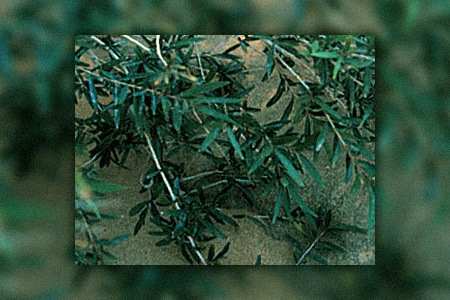
Sahara Myrtle is very uncommon because they only grow in the Central Sahara mountains. So, you won't be seeing these myrtle types anywhere else.
The main use of this plant is for the native Tuareg community, who use it as an edible source and for medical purposes. The leaves are very potent in making different medicines and have a penetrating ability.
Willow Myrtle
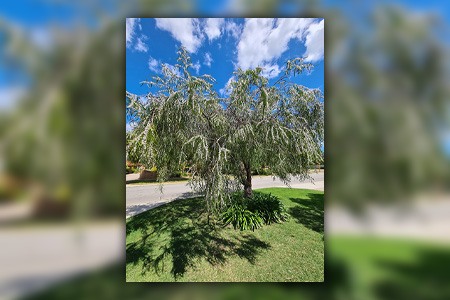
Known as swan river peppermint, these plants have drooping willows, which separate them from other myrtles in terms of outlook. These are robust and small trees growing up to just 10-15 meters tall.
Willow myrtle comes with green foliage, which blooms white flowers during the summer season. It has shiny leaves hanging from its drooping branches. Many could easily confuse the willow myrtle with any of the types of willow trees, but they're not the same.
You can find the willow types of myrtle in Australia. It grows in regions where there are stable dunes and sandy soil. These myrtle tree types are known to be very invasive, just like rose myrtles. They spread fast and can drastically change the landscape.
In some parts of Australia, they are known to be overpowering vegetation, which can be concerning. On the other hand, some communities still adore willow myrtle because of its aesthetic value.
Common Myrtle
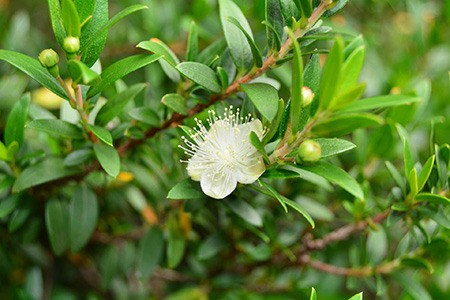
The previous plants we mentioned might not be ideal for indoor use, because they are very big. So is it possible to fit a myrtle plant indoors? Yes, the Common Myrtle also known as Myrtus Communis (dwarf variant) can be planted inside your house, balconies, etc.
They bloom white and pink toned flowers with surrounding green leaves. Adding to the positives, these myrtle tree variety grow sweet, edible blackberries. The blossoming season is during the summer.
Ralph Myrtle
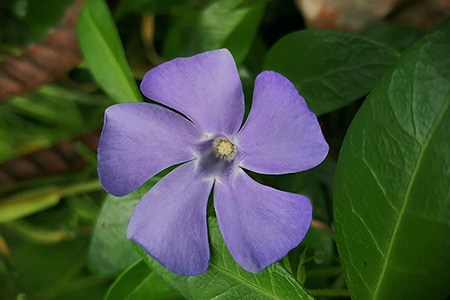
This variant of myrtle is very unique looking and is cultivated for gardening decoration. This plant can withstand extreme heat and can be set under the sun. It will last the drought season effectively if the soil is perfectly drained.
You won't have to water these myrtle tree variety every day. They blossom during the summer season and exhibit pink flowers with red berries.
Twisted Myrtle
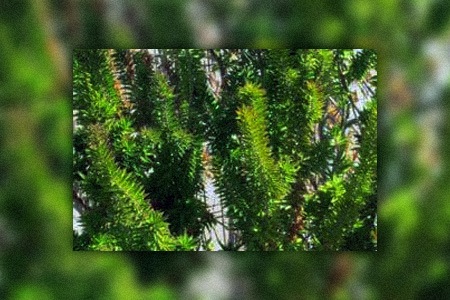
The Myrtus communis Boetica can grow up to 10 feet tall and as wide as 8 feet. It's called "twisted" because the trunk and branches grow in a contorted fashion. The leaves tend towards the darker side and have a cupped shape where the edges curl upwards.
The leaves of these types of myrtle trees grow right up to the stem, having nearly zero petiole. As usual, when it flowers you'll enjoy aromatic, white foliage when broken, crushed, and rubbed up against.
Variegated Myrtle
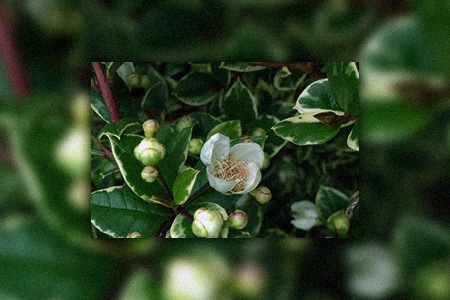
Like other myrtle species, the Myrtus communis Variegata grows white flowers that are aromatic, releasing their fragrance when crushed. The edges of the leaves feature white outlines or margins, for lack of a better word.
This gives the plant a very winter-ish look, in my opinion. Once it develops its berries, the leaves provide a nice canvas backdrop that makes them stand out. The plant will grow up to 8 feet tall so be prepared for maintenance if that's an issue.
Types of Myrtle to Bloom & Flower in Your Garden
Now that you know the myrtle tree types, you should be able to nitpick the suitable ones from this diverse collection to adorn your garden or house space. Keep in mind that myrtles are not small, thus they need bigger space to be cultivated.
As an exception, you can also find dwarf myrtle varieties like the Myrtus Communis, which can be fitted in small tubs and help embellish your veranda, balconies, or doorsteps. The different types of myrtle not only look good, but they also smell wonderful, and on top of it, they have edible properties.



